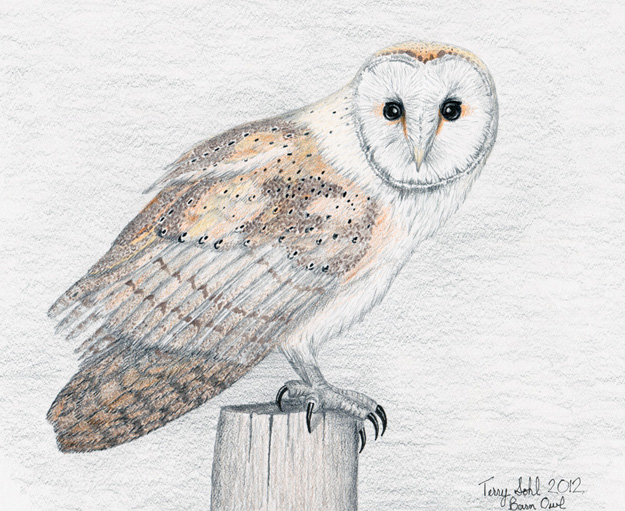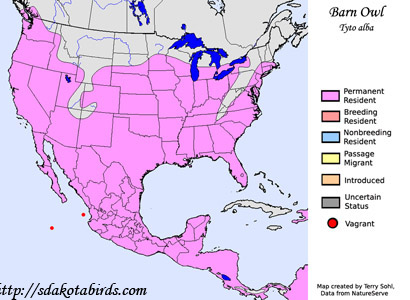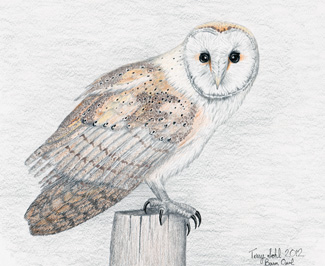| Length: 16 to 20 inches | Wingspan: 45 inches | Seasonality: Summer |
| ID Keys: Heart-shaped face with dark eyes, lack of ear tufts, white underparts | ||
 Rather unique in
appearance among the owls, South Dakota represents the northern part of the Barn
Owl's range. Barn Owls are among the most widespread of all land-based
birds, and can be found on every continent except Antarctica. Roosting by
day and active by night, the Barn Owl's raspy shrieking call can occasionally be
heard as it flies overhead. Significant populations have recently
been found roosting and raising young in cavities dug into the sides of bluffs
lining the Missouri River near Pierre. Recent winter sightings also
suggest that some Barn Owls may indeed attempt to overwinter in the
state.
Rather unique in
appearance among the owls, South Dakota represents the northern part of the Barn
Owl's range. Barn Owls are among the most widespread of all land-based
birds, and can be found on every continent except Antarctica. Roosting by
day and active by night, the Barn Owl's raspy shrieking call can occasionally be
heard as it flies overhead. Significant populations have recently
been found roosting and raising young in cavities dug into the sides of bluffs
lining the Missouri River near Pierre. Recent winter sightings also
suggest that some Barn Owls may indeed attempt to overwinter in the
state.
Habitat: Generally found in open to semi-open country. Can be found nesting in rural buildings such as barns, abandoned farm houses, and other agricultural and rural buildings.
Diet: Primarily feeds on rodents and other small mammals. May occasionally feed on birds, large insects, lizards, and rarely fish and frogs.
Behavior: Hunts almost exclusively at night, only very rarely during the day. Usually hunts by flowing low and slow over the ground, finding prey by both vision and with its acute hearing. Studies in controlled environments in complete darkness have shown Barn Owls can capture prey in the complete absence of light.
Nesting: May through August
Interactive eBird Map: Click to access an interactive eBird map of Barn Owl sightings
Song: Barn Owl Song
Migration: South Dakota represents the northern edge of the Barn Owl's range. Birds in the northern portion of their U.S. range generally migrate southward in the fall. Some recent sightings during winter months indicate that some may attempt to overwinter in the state, however.
Similar Species: Generally a distinctive look compared to other owls.
Conservation Status: Numbers appear to be decreasing in parts of its range in the United States.
Further Information: 1) Patuxent Bird Identification InfoCenter, Barn Owl
Image Information: Colored pencil drawing by Terry Sohl - September 2012
| Click on the map below for a higher-resolution view |
 |
| South Dakota Status: Rare summer resident in southern portions of South Dakota. Casual in winter. |
Additional Barn Owl Images
Click for a higher-resolution version of these photos

